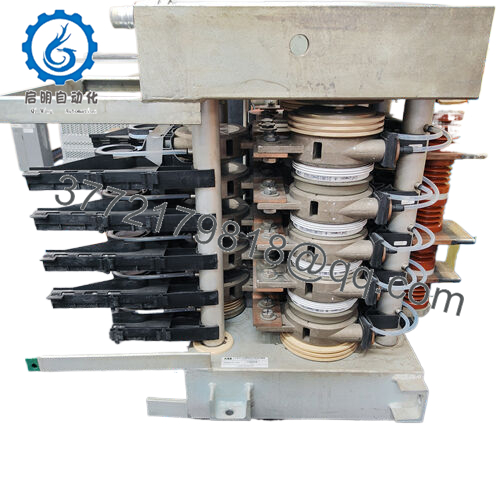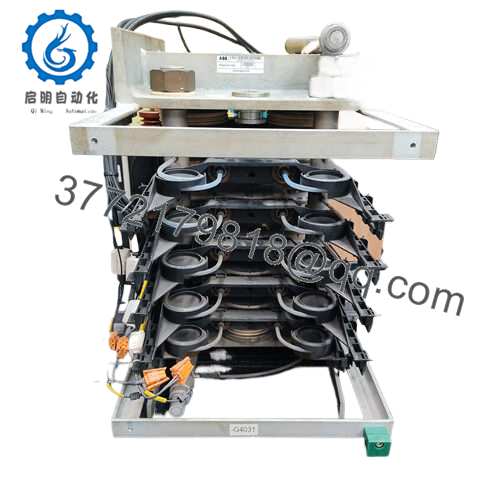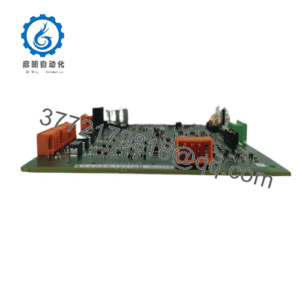Description
The ABB S-113H 3BHB01808R0003 is a high-performance Insulated Gate Commutated Thyristor (IGCT) controller module designed for medium-voltage power electronic applications. It merges the advantages of traditional Gate Turn-Off (GTO) thyristors and Insulated Gate Bipolar Transistors (IGBTs), offering superior switching characteristics such as high blocking voltage, rapid switching speed, and low on-state losses. This makes the module ideal for critical industrial uses including variable frequency drives (VFDs), inverters, AC transmission systems, motor drives, and renewable energy power conversion.
Constructed as a modular power semiconductor device, the ABB S-113H integrates an advanced gate unit that simplifies installation and control via fiber optic connections. Its conduction losses are among the lowest for high-power semiconductors because turn-off resembles transistor behavior while turn-on is akin to thyristors, lending excellent efficiency with typical inverter efficiencies exceeding 99.6%. It supports switching frequencies up to 40 kHz, which is notably high for devices handling large currents and voltages, enabling fast and precise control in dynamic industrial systems.
The module is engineered to operate under demanding environmental conditions, with an operational temperature range from -40°C to +85°C and shock resistance compliant with rigorous industrial standards. Its design features include built-in safety and protection measures such as an open protection network to manage current rise rates safely. The press-fit module mounts on cooling radiators that serve both thermal management and electrical contact roles, ensuring effective heat dissipation critical for maintaining reliability in continuous operation.
| Parameter | Value |
|---|---|
| Model | ABB S-113H 3BHB01808R0003 |
| Brand | ABB |
| Product Type | IGCT Controller Module |
| Switching Frequency | Up to 40 kHz |
| Voltage Rating | Medium Voltage Range (exact varies) |
| Current Rating | High current capability (specifics depend on setup) |
| Conduction Loss | Low (similar to thyristors) |
| Turn-Off Characteristics | Transistor-like |
| Gate Control | Integrated fiber optic gate unit |
| Operating Temperature | -40°C to +85°C |
| Cooling | Radiator mount |
| Protection Features | Open protection network included |
| Weight | Approximate, varies |
| Dimensions | Module-specific, moderate size |
| Certifications | Industry standard compliant |
| Applications | VFDs, inverters, motor drives, AC transmission, renewable energy |
- ABB S – 113H 3BHB018008R0003
- ABB S – 113H 3BHB018008R0003
Related Modules or Compatible Units
ABB 5SHY3545L0014 – IGCT module with varying specifications for different power ranges.
ABB S-073N 3BHB009884R0021 – Medium voltage thyristor for converter applications.
ABB 5SHY4045L0003 – High voltage IGCT module compatible with similar applications.
ABB 5SHY3545L0005 – Compact IGCT module for power electronics.
ABB S-113K – Advanced version with enhanced switching capabilities.
ABB PM573-ETH – ABB PLC module that may interface with power electronics control.
ABB AC500 platform – System environment for control modules, including IGCT controllers.
Installation Notes & Maintenance Best Practices
Installation of the ABB S-113H requires careful mechanical mounting on appropriate cooling radiators for optimal thermal management. Adequate spacing around the module is vital to allow airflow and prevent heat buildup. Proper isolation of control signals and grounding methods are necessary to prevent electromagnetic interference and ensure operator safety. Fiber optic connections for gate control must be securely installed following ABB’s detailed wiring protocols.
Maintenance includes periodic inspection of thermal contacts, cooling system effectiveness, and gate connection integrity. Regular electrical testing safeguards against early signs of degradation or thermal stress. Due to the high switching frequencies and power levels, any firmware or control software updates from ABB should be applied promptly to maximize efficiency and safety. Ensuring protective circuits remain fully operational helps mitigate risks during transient events or faults.



 WhatsApp: +86 16626708626
WhatsApp: +86 16626708626 Email:
Email:  Phone: +86 16626708626
Phone: +86 16626708626


